Conservatory plant ideas – ways to display the best plants for a garden room
We talk to a plant expert for recommendations on the most suitable conservatory plant ideas for your home
Conservatories are a natural choice when it comes to filling an indoor space with plants and with these beautiful conservatory plant ideas, you can fill your room with greenery to help blur the lines between indoors and outdoor.
This is a growing trend in recent years as we strive to feel at one with nature in our homes.
Some plants are better suited than others of course. So we've explored the most suitable varieties, along with the most expressive ways to bring these house plant ideas to life.
Conservatory plant ideas
'Conservatories are a great way to add extra living space to a house and they can create a bridge between the indoors and the garden. They are also, of course, fantastic environments for many types of house plant,' explains foli8’s Plant Scientist Kenneth Freeman.
But not all plants will thrive in this changeable environment – baking hot in summer and freezing cold during winter.
'Conservatories are often warm – almost hot – in the summer, despite all efforts to shade them. Conversely, they can be a little chilly in the winter. These conditions are ideal for a wide range of plants which can be displayed with great imagination and style.'
We asked Kenneth to share more of his expert advice for choosing the best suited plants for a conservatory idea.
Get the Ideal Home Newsletter
Sign up to our newsletter for style and decor inspiration, house makeovers, project advice and more.
1. Look for bright-light plants
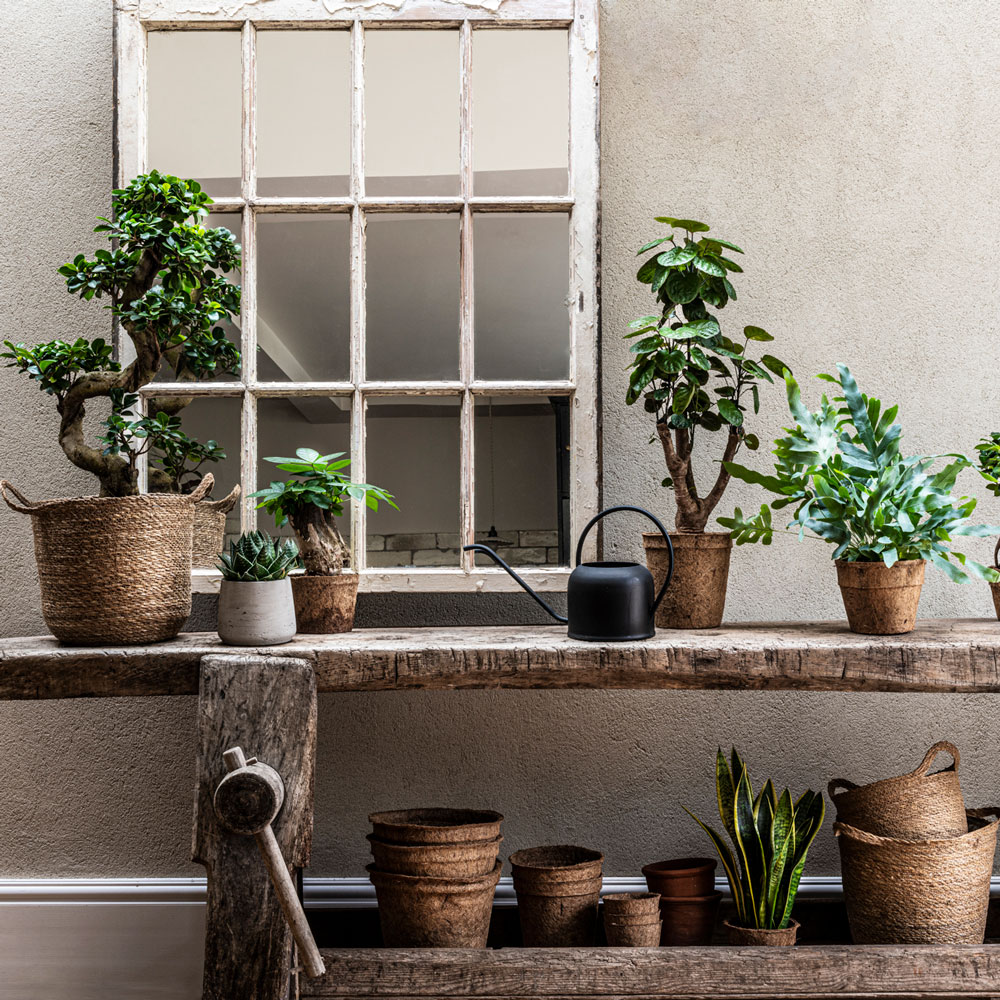
'One of the great advantages of garden rooms is that they are usually so well lit. This means that your plants will seldom be wanting for light,' says Kenneth. 'Typically, plants that like bright lights do well in conservatories.'
There are a whole host of house plants that thrive in the brightest of sunshine. Varieties range from taller Ficus trees and sizeable Monstera plants to smaller 'coffee plants' and 'spider plants.
On foli8.co.uk there are currently 47 different varieties of plants especially picked as 'Bright Light Plants' to explore the style of leaf you want to help to create a depth of height and fullness to your conservatory plant display.
2. Select plants with long sword-shaped leaves
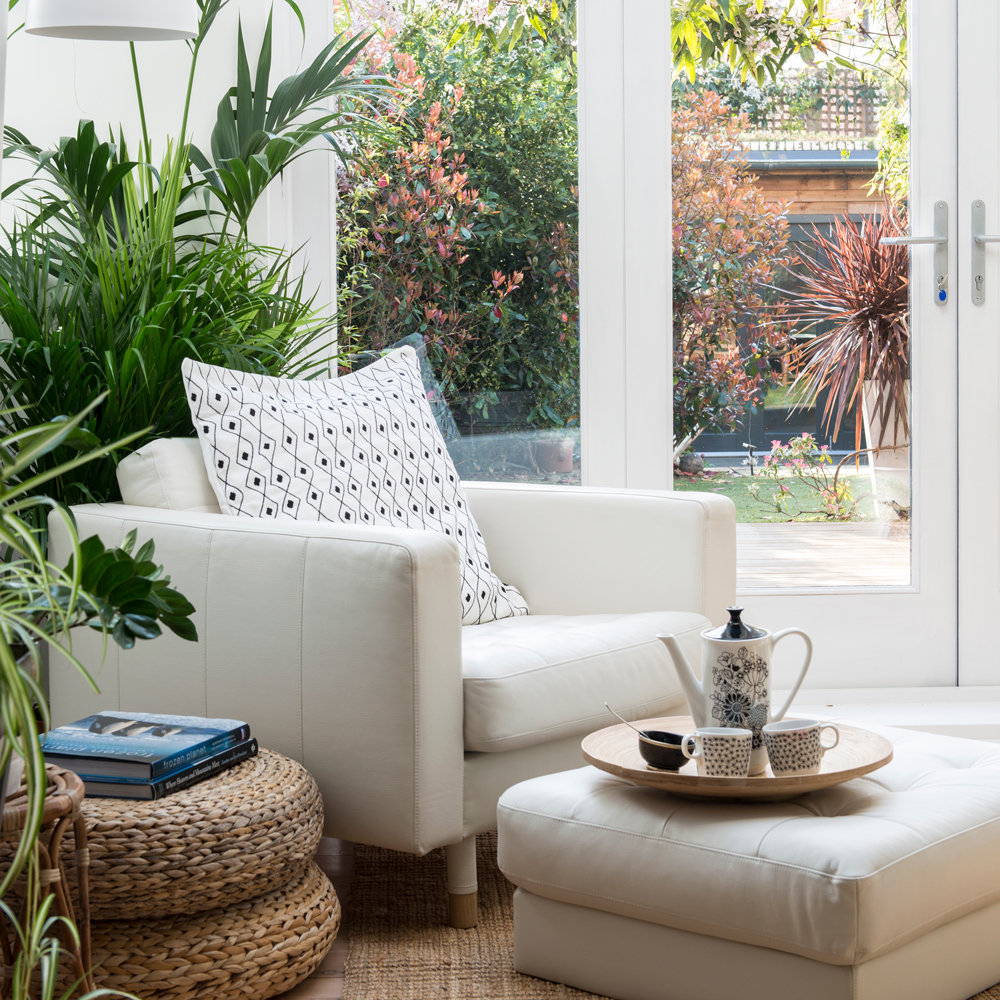
'This leaf shape evolved in semi-arid regions on many continents,' Kenneth explains. 'The leaf shape is good for conserving water, as it has a relatively low surface area, and the foliage grows in a self-shading rosette form.'
'Dracaenas and Yucca elephantipes are great garden room plants that can cope with cooler conditions in the winter, and they like really good light.'
3. Embrace hardy succulents
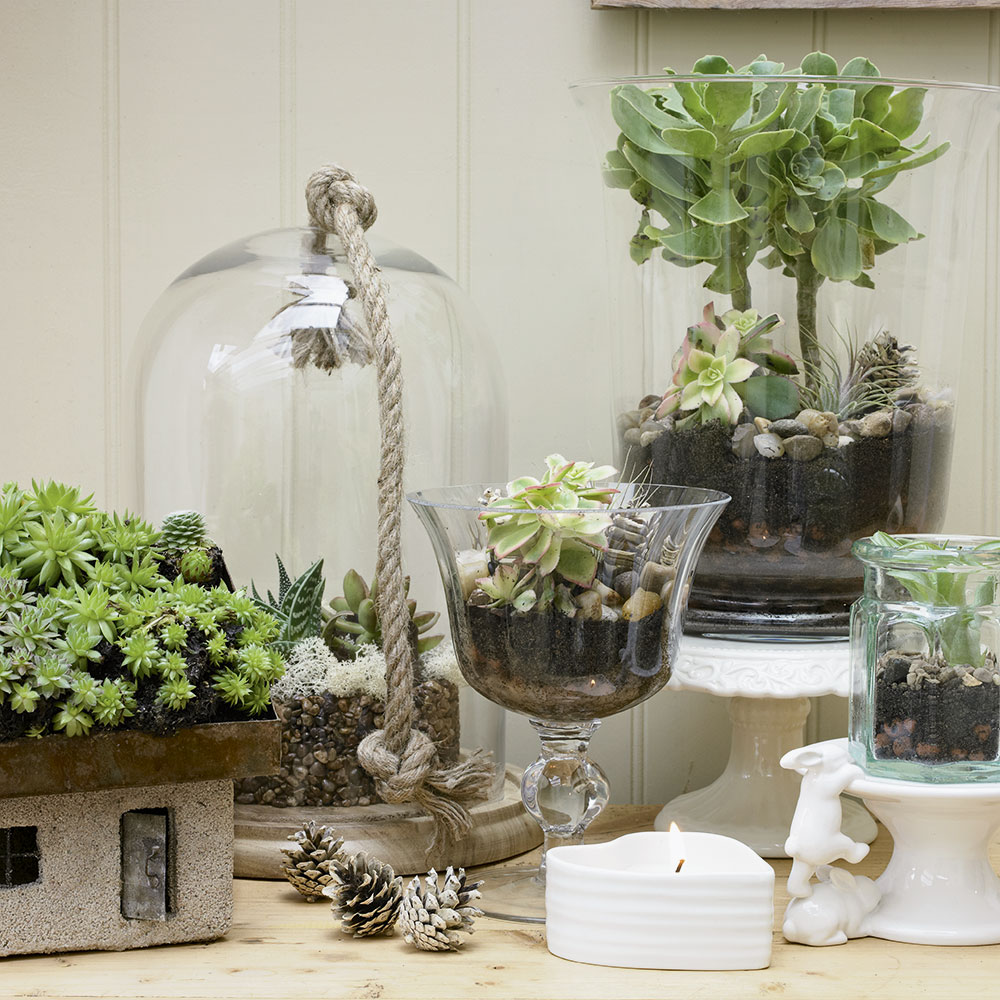
'In very bright spots, look for plants that are succulent,' Kenneth advises. Plants that 'have foliage in a compact rosette or reduced to spines (as in cacti), are hairy or waxy. These are all ways to conserve moisture'.
'Hairy succulents trap a layer of moist air close to the surface of the plant and those with a blue or grey waxy coat use it to reflect damaging heat and light – a natural high factor sunscreen.'
4. Display plants at different heights
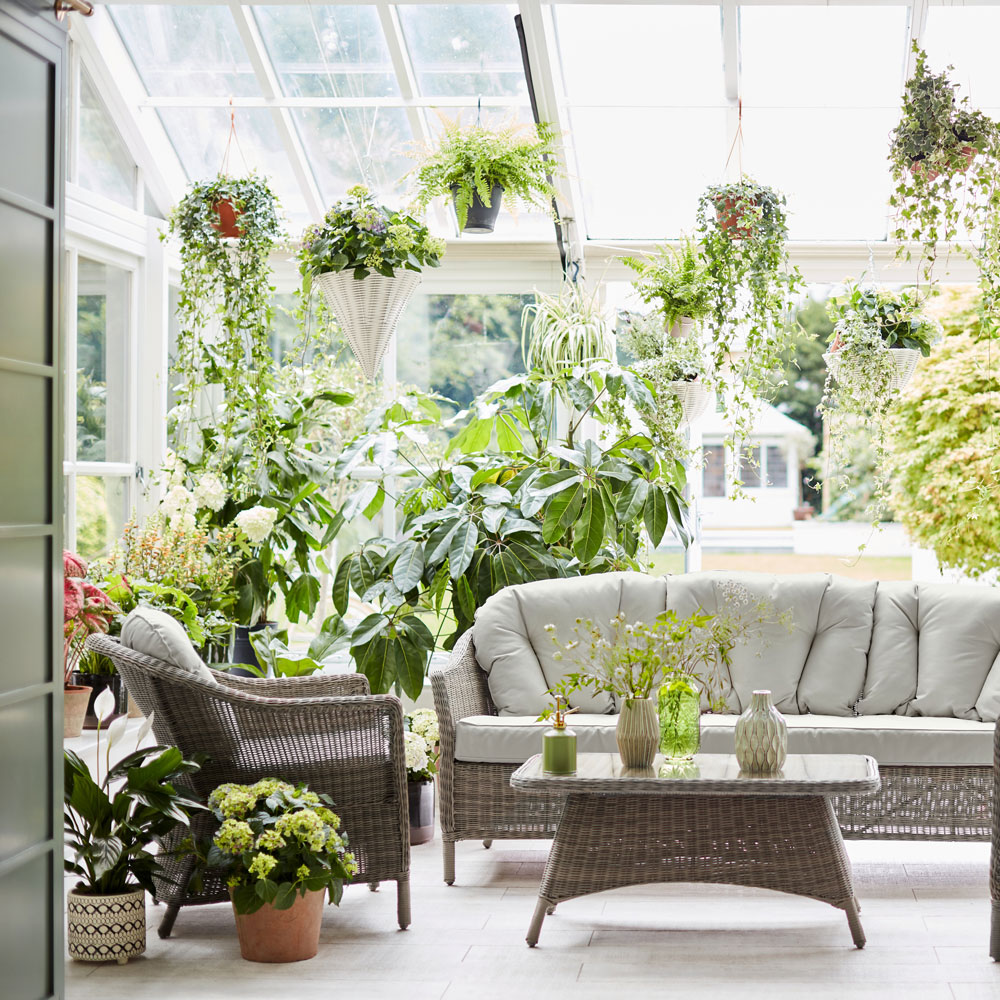
When looking to display your chosen plants, think about incorporating different varieties to fill different levels within the space. Don't go for all low level plants or all taller trees, as this will limit your overall display and make the space feel restrictive.
Balance the heights to ensure the eye flows throughout the space, rather than focusing all the visual interest on the same level.
'Hanging plants are great, too,' suggests Kenneth.' There is often ample headroom in a conservatory to have some vining plants that hang down, or that can be trained along wires.' For example, you could learn how to make a macrame plant hanger that can drop from the ceiling.
Also consider what conservatory furniture you have, ensuring you have a range of plants that can still be seen from the sofa – not lost behind etc.
5. Look for shady alternatives
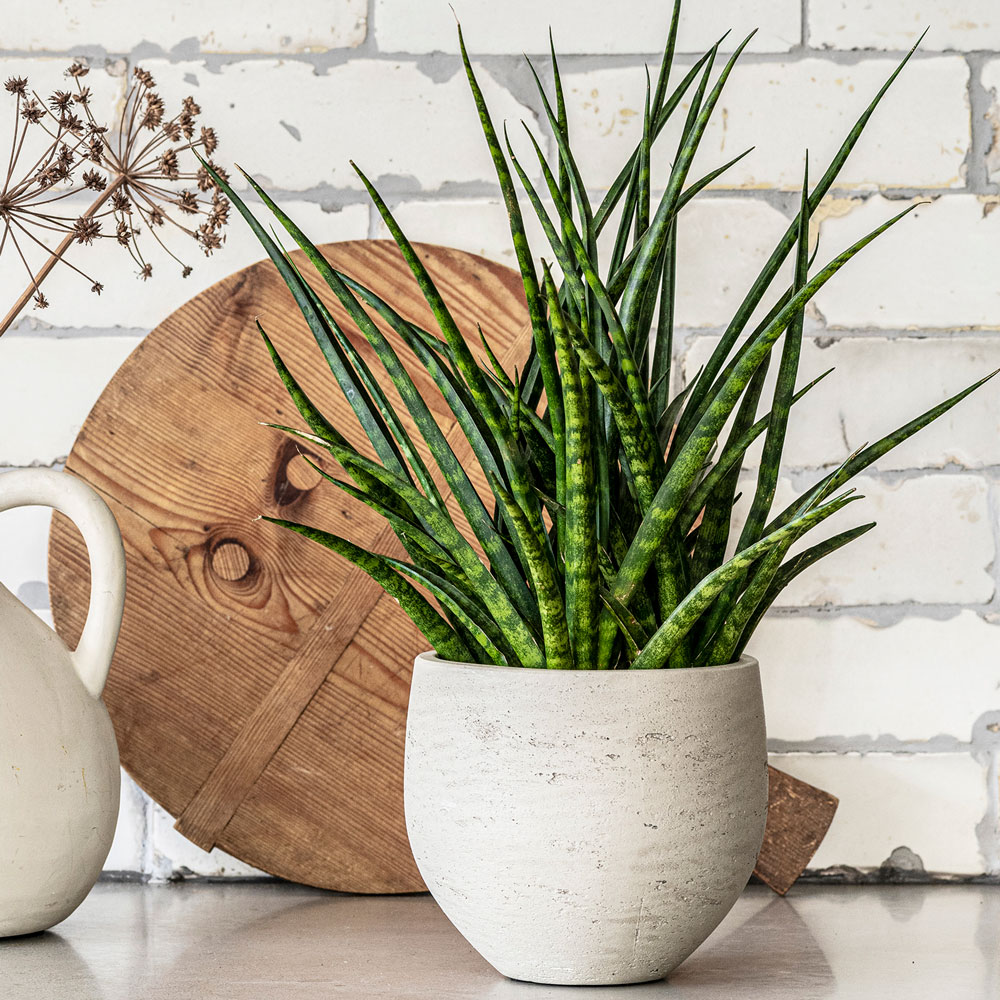
Sanseviera 'Fernwood'
'Some plants are quite tolerant of direct light (desert plants, for example). But others are rather more fragile, and their leaves can get damaged,' Kenneth warns. 'Artificial shades are often fitted in conservatories, and these are very useful, but don’t forget that you can use large plants to shade smaller specimens.'
'In more shady areas, you could try Sansevieria canaliculata “Fernwood” or its bigger cousin Sansevieria trifasciata “laurentii”, aka The Snake Plant.'
6. Keep it simple for a mindful effect
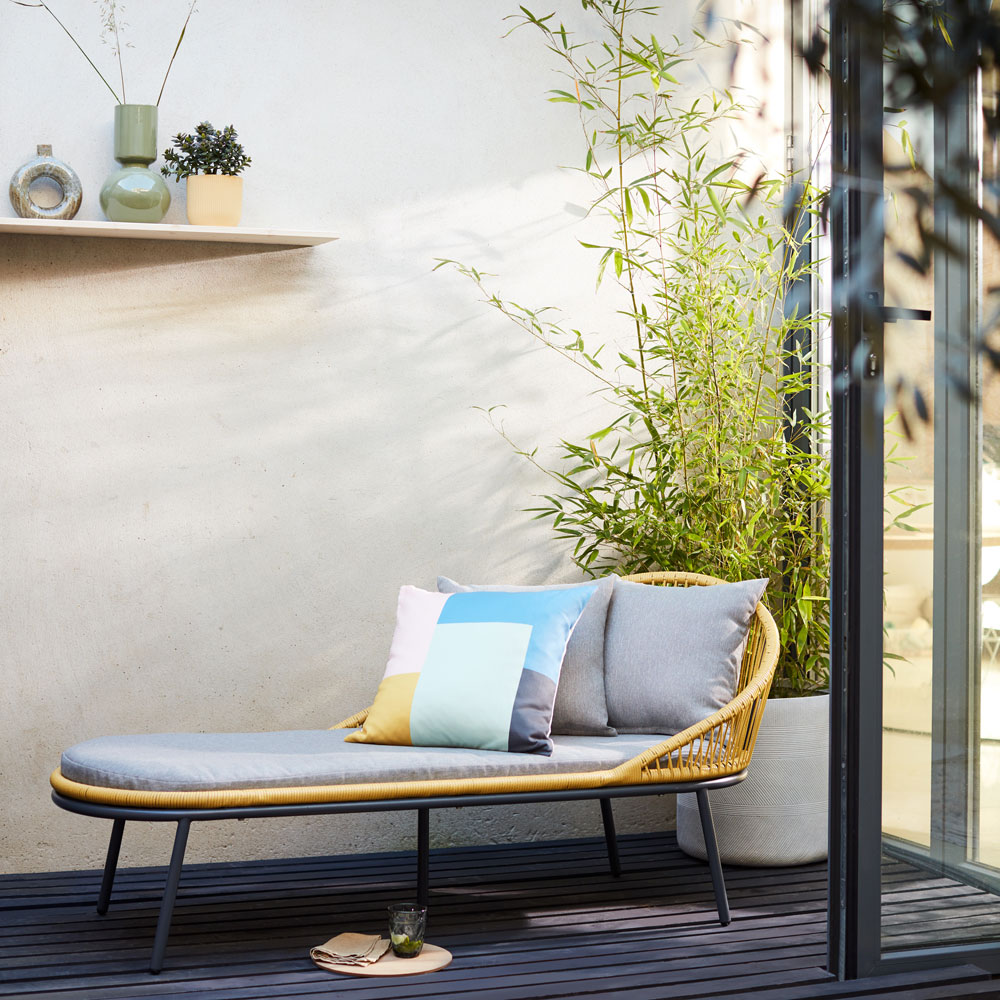
A growing trend is emerging for zen garden ideas, where the space uses simple structural planting to create a sense of calm, by being surrounded by nature without feeling overwhelming.
When thinking about small conservatory ideas, look to keep your plant choices limited but nonetheless statement. This potted bamboo evokes a Japanese garden feel with a feeling of zen.
7. Set the scene for a yoga studio
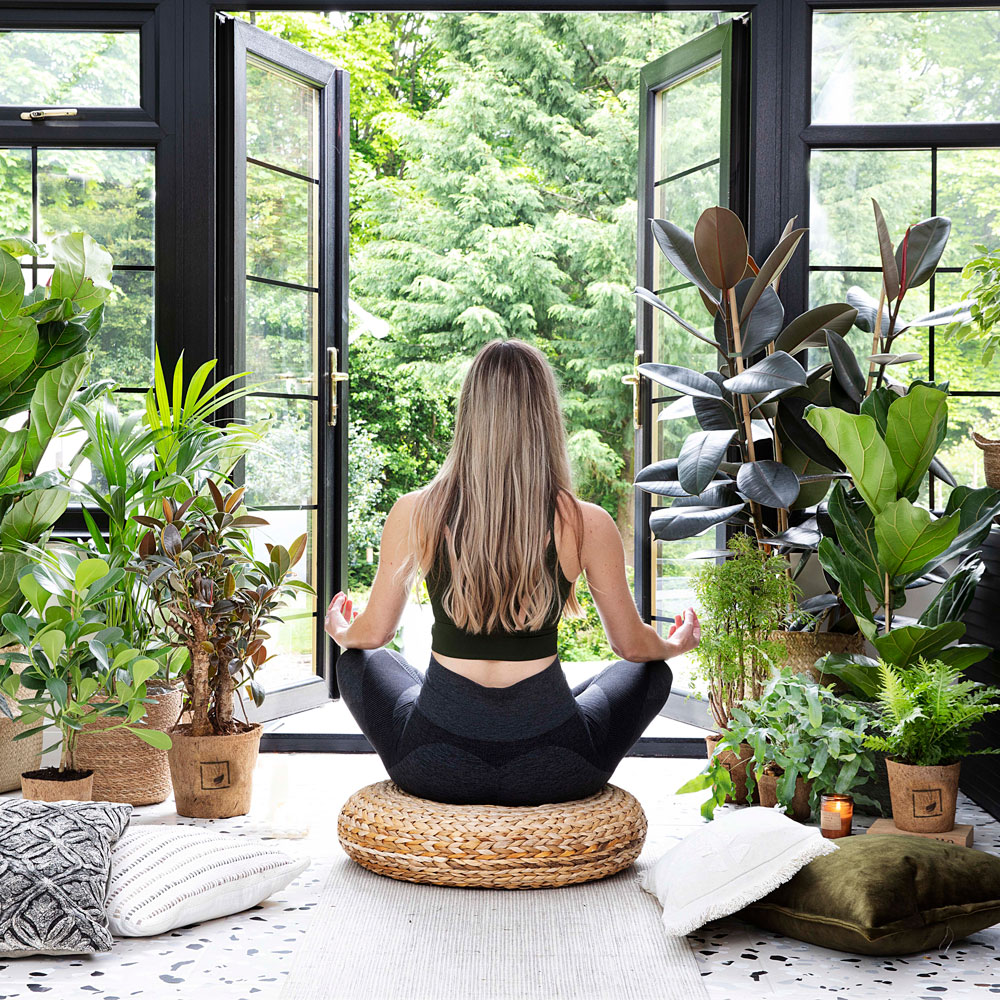
'Yoga is all about breathing and relaxation, using your body to keep you grounded and centred,' explains Michaela Shoebridge. 'By adding a variety of plants as a feature and focal point, you can enhance your practice. Plants absorb carbon dioxide and convert it into oxygen-rich surroundings to create a healthy atmosphere.'
Working alongside foli8, Michaela recommends the best plants for the job. 'Plants such as the Rubber Plant and Fiddle Leaf Fig offer luxurious leafy contours and heights to fill the space and Cheese Plant and Calathea are the best for relaxation and purification.
'Add soft textures with accessories or scented candles to help you lift your mood and encourage a sense of calm and happiness.'
8. Create dappled shade with bushier foliage
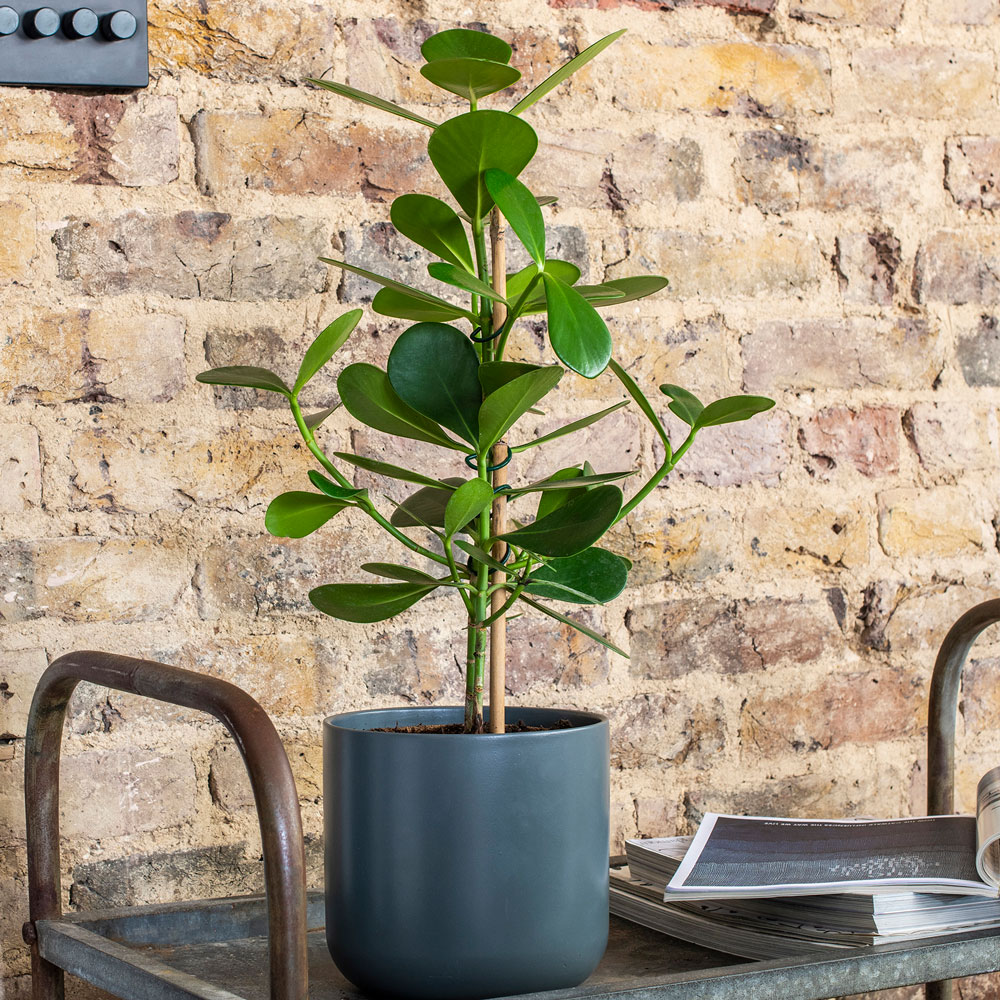
Autograph tree
'If you want some bushier foliage in your conservatory plant displays, then trees with smaller leaves would be good such as the Autograph Tree or Ficus Benjamina,' suggests Kenneth. 'If these plants are positioned quite high up, they can cast some nice dappled shade for other plants, or people wanting to be out of the direct sunlight.'
But Kenneth does warn, 'They will, however, need somewhat warmer conditions in the winter than plants from deserts and other arid areas.' Meaning they will benefit from moving into a living room area during really cold spells.
9. Grow fruit trees to add colour
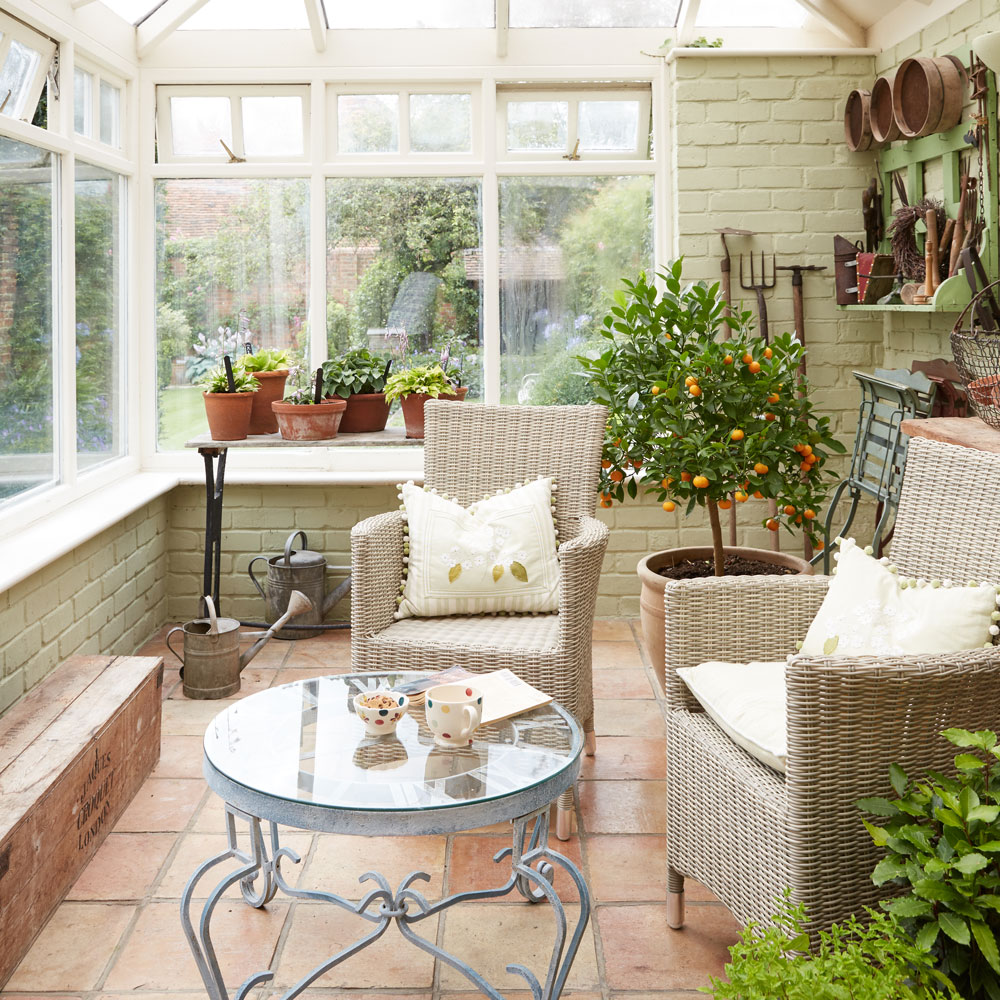
Welcome your conservatory space to take on a greenhouse feel with the introduction of fruit times. Used to hotter tropical climates, many citrus fruit trees thrive in the hotter temperatures. Citrus trees will not only provide greenery but also a splash of zesty colour, from vibrant orange to lemon yellow.
10. Soften the space with planting
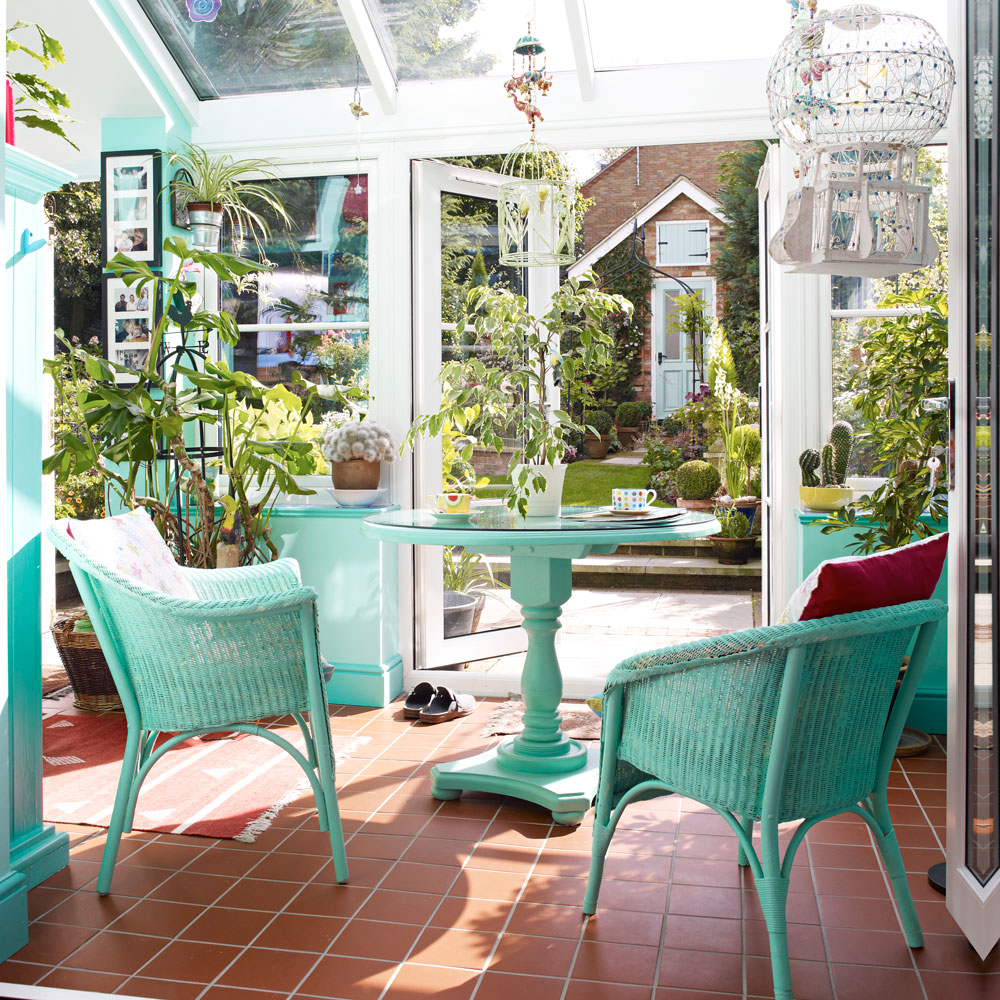
Use thoughtful plants to break up the decor, without having to add textiles to do the job. Mix rounded leaves with more spiked varieties to balance the effect.
Make your conservatory plant display fit for all seasons by balancing the best suited plants. Ensure you have a variety of hearty plants that can be left in the conservatory during the frosty winter months.
Of course, if you have temperature control blinds or a heating source, the less hardy plant might be ok to leave in the room. Ensure you've researched your chosen plant variety to safeguard its welfare, whatever the weather.
11. Go large for maximum coverage
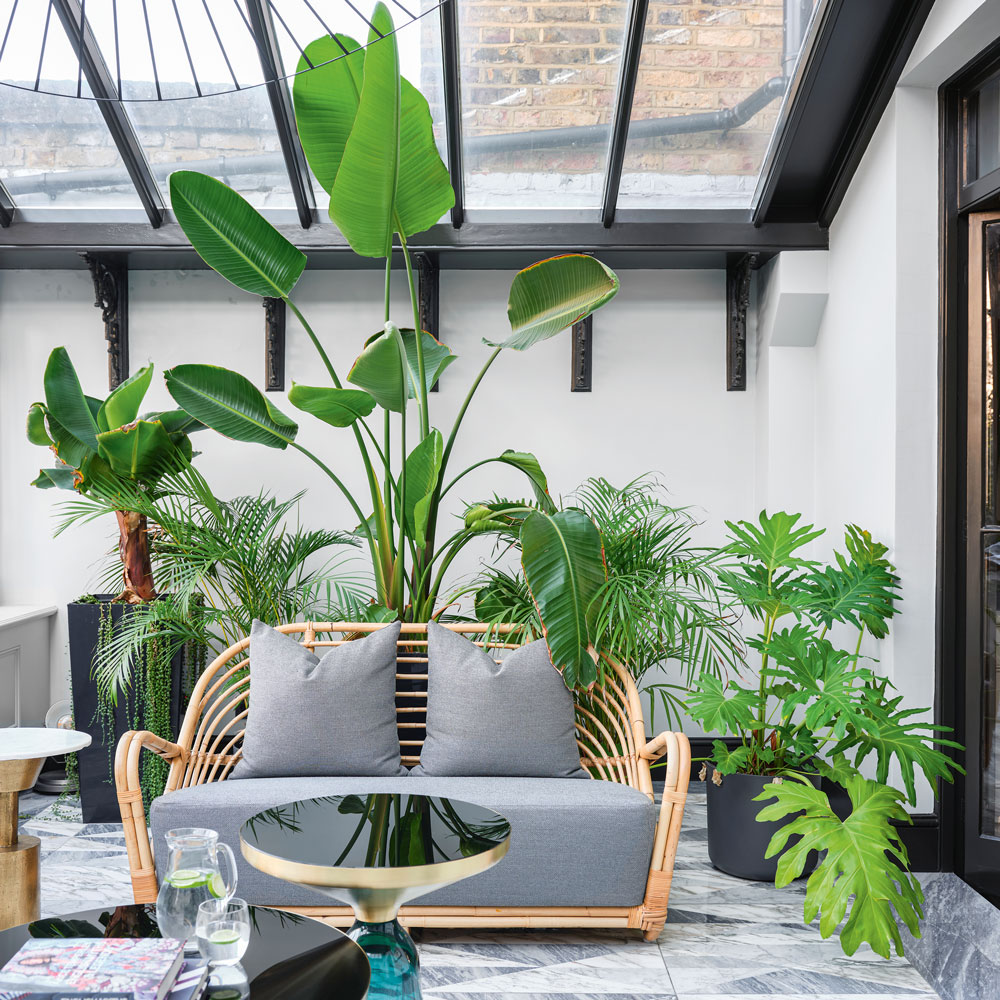
If you really want to welcome the outdoors in, choose large potted plants that have room to grow, filling the space with foliage. As Kenneth suggested earlier, this level of leaf coverage creates a dappled shade to ensure the room can be used at the hottest times of the day.
Choose plant varieties with extra large leaves, to provide greater shade.
12. Encourage climbers
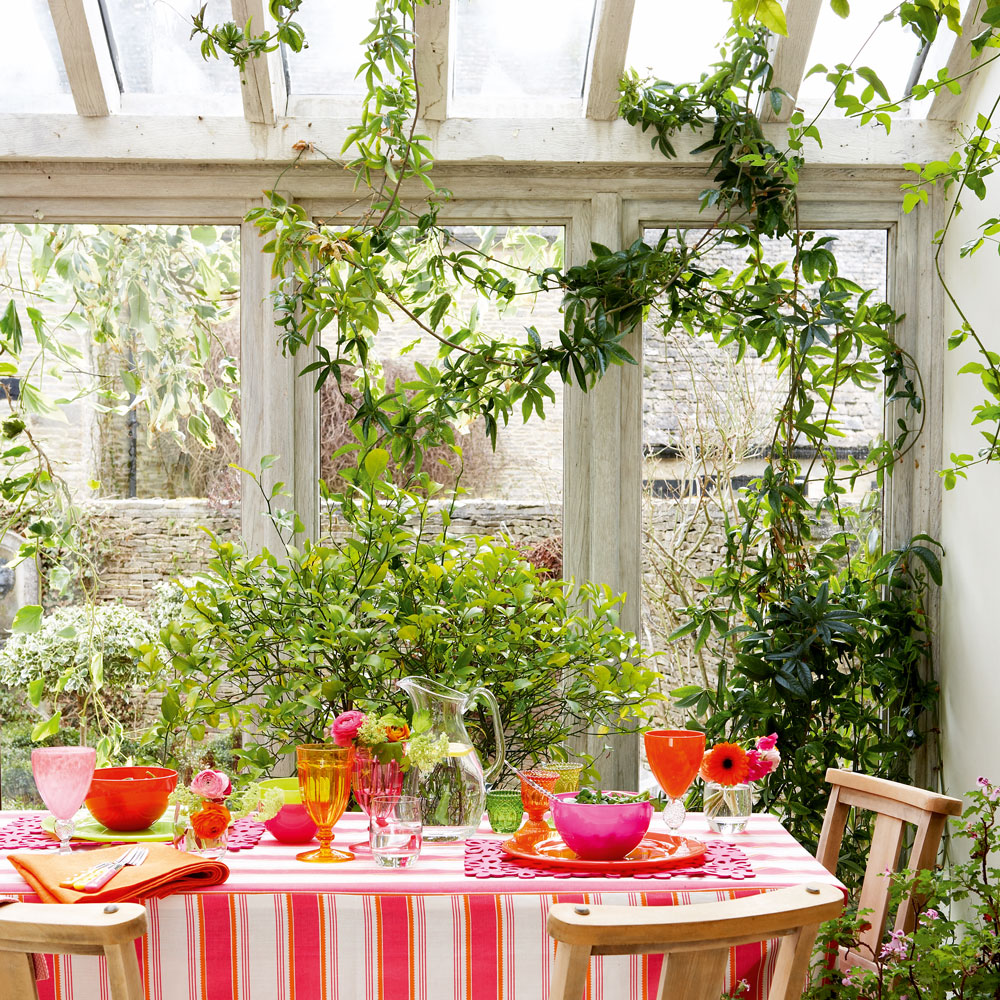
For a fully immersive garden room design experience, encourage climbing plants to trail down the conservatory structure. If your conservatory structure is a wooden frame you can easily attach hooks to support the plants.
If your conservatory has a UVPC frame, look for plant supports in pots to make the look work with ease. Allow the pot to sit neatly in the corner to give your climbing plant two walls to grow against.
What plants grow well in a conservatory?
'Temperatures in conservatories can get quite high in the summer and drop fairly low in the winter,' explains foli8’s Plant Scientist Kenneth Freeman. 'Especially if the room is not used often. Most plants do best under fairly constant conditions. But those from semi-arid regions are, surprisingly, much more tolerant of low temperatures.'
'Mediterranean species also prefer some seasonal variation, so as long as your conservatory doesn’t fall below 10°C, you will have a wide choice,' says Kenneth. 'If you are looking to keep some tender tropical plants in a conservatory, then you will need to keep minimum temperatures a few degrees higher: 15°C at least.'
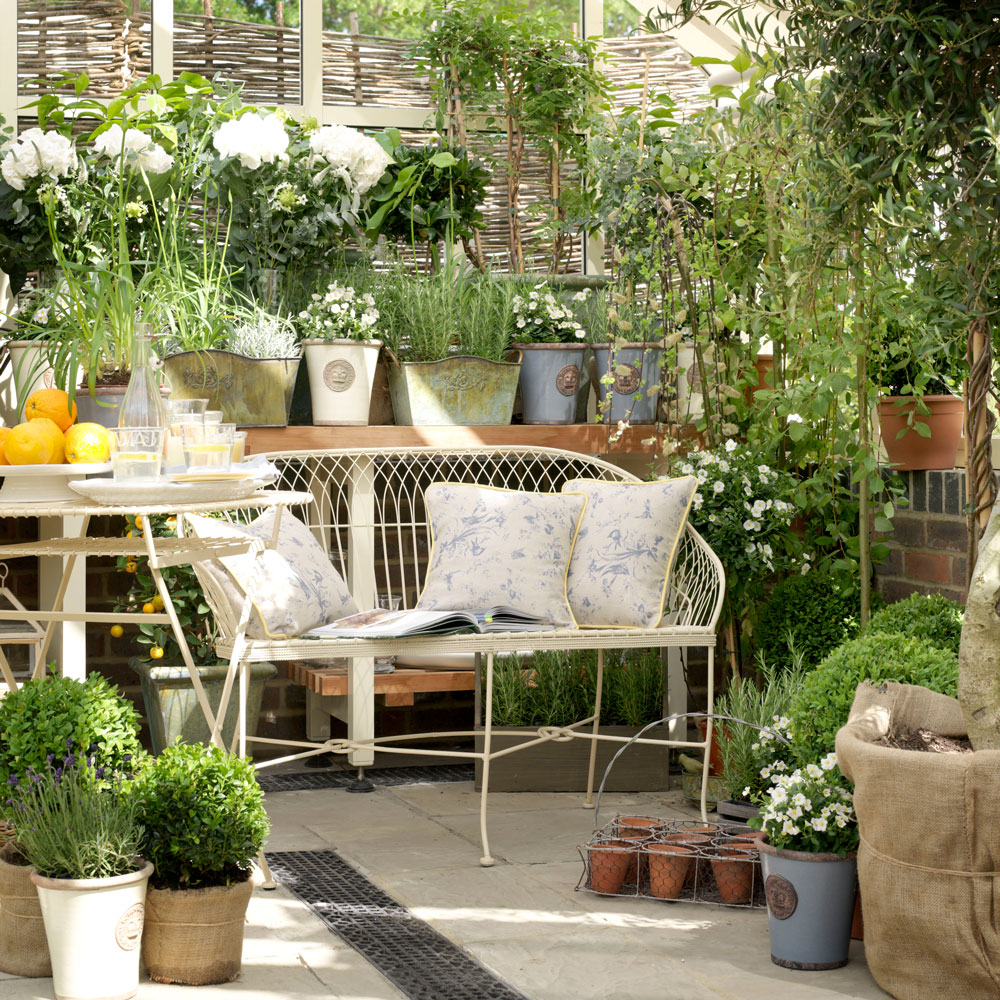
What plants survive in a hot conservatory?
'Plants from the tropics do well under humid conditions. They have their origins in rain forests where there is ample moisture in the air,' explains Kenneth Freeman.
'A good way to ensure the right humidity, without it becoming too oppressive, is to have an indoor water feature where there is constant movement of water. These can be quite inexpensive, and the sound of trickling water adds to the atmosphere too.'
'Another way of maintaining humidity is to stand plant pots on trays with a few centimetres depth of LECA (these are small expanded clay pellets that can absorb a lot of water) or even gravel,' suggests Kenneth. The high surface area will allow lots of moisture to evaporate around the foliage.'
'This also has the benefit of making the environment less attractive to two-spotted spider mites.' Spider mites are a pest that can run rampant in warm and dry conditions.
'Plants from arid or semi-arid regions do better under conditions of low humidity. Such as cacti and succulents, as well as plants with long sword-shaped leaves. Fortunately, these are generally untroubled by spider mites.'
How do you arrange plants in a conservatory?
'If you have the space, consider creating groups of plants in a naturalistic setting by clustering pots together,' suggests Kenneth. 'Or even creating a larger indoor feature bed. Make use of accessories such as interesting rocks and stones, too.'
'Of course, these suggestions aren’t exhaustive. There are dozens of plants in our range that will do really well in a conservatory,' says Kenneth. 'A lot depends on the space you have available, the environmental conditions you want to maintain and what you use the space for.'
Tamara was Ideal Home's Digital Editor before joining the Woman & Home team in 2022. She has spent the last 15 years working with the style teams at Country Homes & Interiors and Ideal Home, both now at Future PLC. It’s with these award wining interiors teams that she's honed her skills and passion for shopping, styling and writing. Tamara is always ahead of the curve when it comes to interiors trends – and is great at seeking out designer dupes on the high street.
-
 Will a conservatory add value to your home and how can you maximise it?
Will a conservatory add value to your home and how can you maximise it?This is what the pros say
By Amy Reeves
-
 I’ve been looking for a new signature scent for my home and The White Company's new fragrance is the exact summer holiday smell I needed
I’ve been looking for a new signature scent for my home and The White Company's new fragrance is the exact summer holiday smell I neededSantorini smells fresh, summery and sophisticated
By Kezia Reynolds
-
 How to remove algae from garden walls in five steps – and the cleaning product experts rave about for tackling it fast
How to remove algae from garden walls in five steps – and the cleaning product experts rave about for tackling it fastExperts share their top tips for getting garden walls algae-free
By Katie Sims